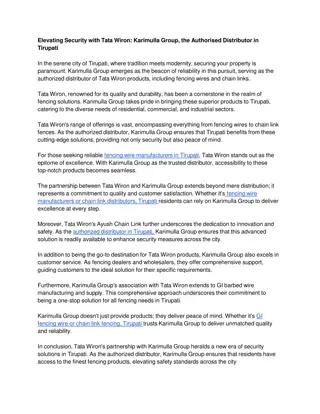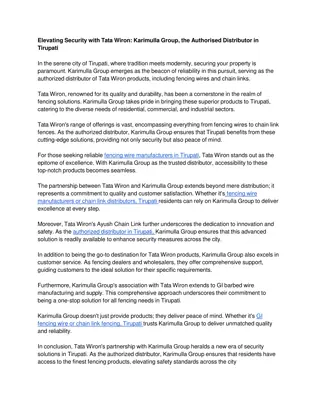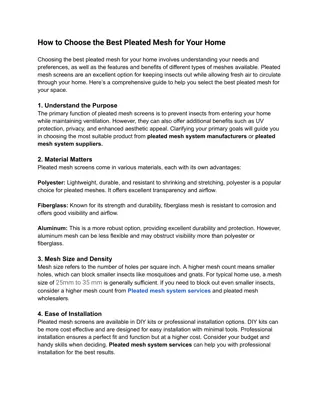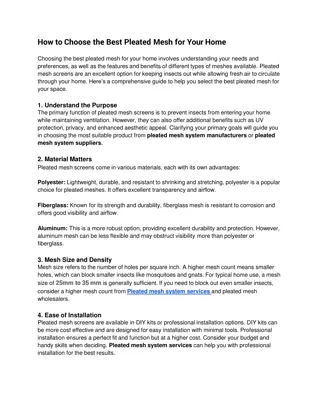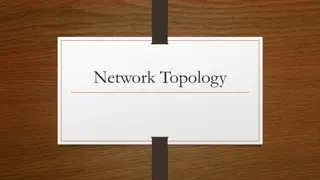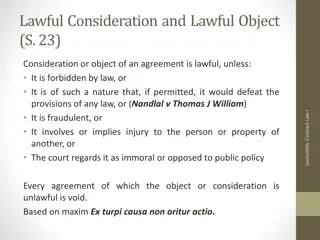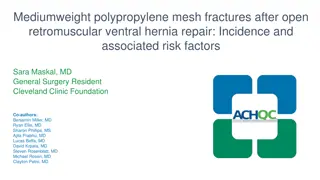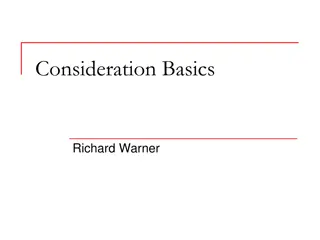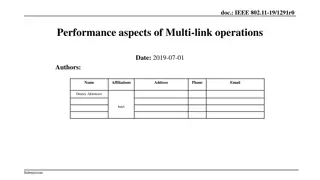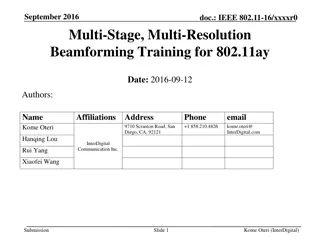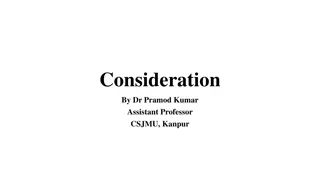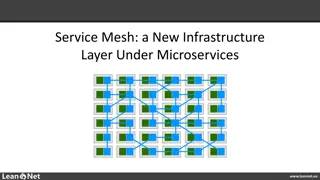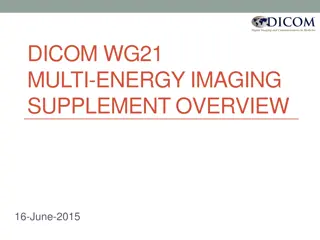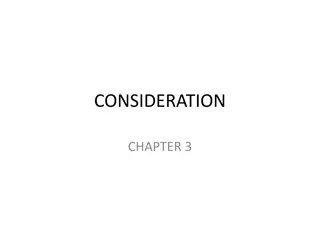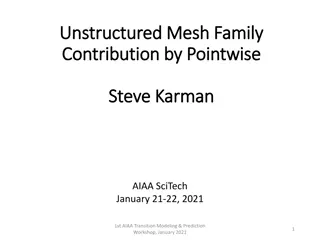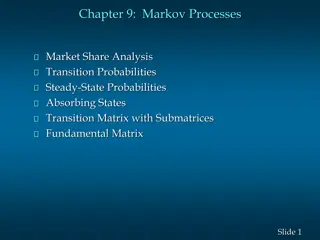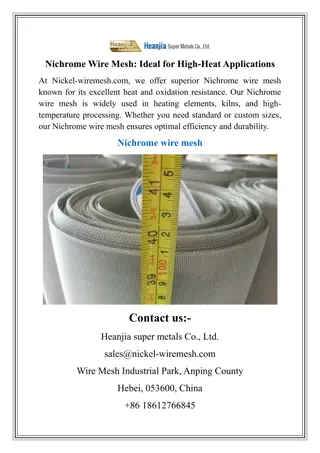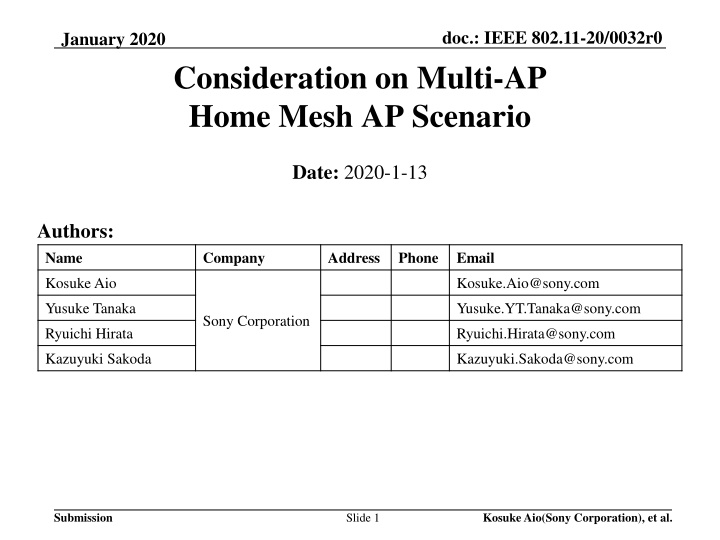
Consideration on Multi-AP Home Mesh AP Scenario in IEEE 802.11-20/0032r0 Document
"Explore the proposal for a Home Mesh AP Scenario in the residential setting, focusing on Multi-AP coordination and system-level benefits within IEEE 802.11 standards. The document discusses the challenges, benefits, and possibilities of implementing this scenario for improved wireless connectivity. Authors from Sony Corporation present insights on joint transmission, frequency reuse, and coordination among APs in the residential environment."
Download Presentation

Please find below an Image/Link to download the presentation.
The content on the website is provided AS IS for your information and personal use only. It may not be sold, licensed, or shared on other websites without obtaining consent from the author. If you encounter any issues during the download, it is possible that the publisher has removed the file from their server.
You are allowed to download the files provided on this website for personal or commercial use, subject to the condition that they are used lawfully. All files are the property of their respective owners.
The content on the website is provided AS IS for your information and personal use only. It may not be sold, licensed, or shared on other websites without obtaining consent from the author.
E N D
Presentation Transcript
doc.: IEEE 802.11-20/0032r0 January 2020 Consideration on Multi-AP Home Mesh AP Scenario Date: 2020-1-13 Authors: Name Company Address Phone Email Kosuke Aio Kosuke.Aio@sony.com Yusuke Tanaka Yusuke.YT.Tanaka@sony.com Sony Corporation Ryuichi Hirata Ryuichi.Hirata@sony.com Kazuyuki Sakoda Kazuyuki.Sakoda@sony.com Submission Kosuke Aio(Sony Corporation), et al. Slide 1
doc.: IEEE 802.11-20/0032r0 January 2020 Introduction Multi-AP Coordination is one of the candidate features for 11be[1] To identify the system level benefit quantitatively, we should set common preconditions on the Multi-AP scenarios Enterprise scenario was discussed before [2] However, residential scenario of Multi-AP Coordination has not been discussed yet In this contribution, we propose a new simulation scenario: Home Mesh AP Scenario based on the TGax residential scenario. Submission Kosuke Aio(Sony Corporation), et al. Slide 2
doc.: IEEE 802.11-20/0032r0 January 2020 Recap of TGax/Indoor Scenarios [3] TGax has defined three indoor scenarios, Residential, Enterprise and Hot spot, where multiple APs exist. From next slides, we review the TGax/Residential Scenario. Residential Enterprise Hot Spot Topology B B B B B B B B B B B B B B B B B B B Channel Model Indoor Indoor Indoor Management Unmanaged Managed Managed Submission Kosuke Aio(Sony Corporation), et al. Slide 3
doc.: IEEE 802.11-20/0032r0 January 2020 Recap of TGax/Residential Scenario TGax/Residential Scenario One Home has one AP (owned by different users) AP-AP is not connected. Frequency Reuse is assumed among neighboring AP. (80MHz x 3) In this scenario, Joint transmission is not applicable. It is difficult to share the data among APs owned by different users. Adjacent AP uses the different channel, not same channel. This residential scenario should be reconsidered to evaluate Multi- AP coordination. Submission Kosuke Aio(Sony Corporation), et al. Slide 4
doc.: IEEE 802.11-20/0032r0 January 2020 Consideration on Home Mesh AP In EHT SG, some contributions assumed Home Mesh AP.[4, 5, 6] Precondition All AP are owned by the same user. AP-AP is wireless connection Wired connection (e.g. Ethernet) is not common due to cable handling at home scenario. APs may connect each other via WAN/LAN port, but coordination via such ports are beyond the scope of 802.11. Same channels among all APs (No Frequency Reuse) Joint Tx can easily be performed in this scenario because: It is easy to share the data among APs owned by the same users. Adjacent AP uses the same channel. Submission Kosuke Aio(Sony Corporation), et al. Slide 5
doc.: IEEE 802.11-20/0032r0 January 2020 Home Mesh AP Scenario Proposal We proposed to use Home Mesh Scenario for residential scenarios of Multi-AP Coordination One solitary house configuration Three 10m x 10m rooms In each room, place an EHT AP and some STAs Mesh Architecture Only AP1 is connected to Internet Network. APs are connected by backhaul, and APs and STAs are connected by fronthaul. Backhaul & Fronthaul are different channel/antennas. Mesh Data Flow (>>: backhaul, > fronthaul) AP1 > STAs in room1 AP1 >> AP2 > STAs in room2 AP1 >> AP3 > STAs in room3 (or AP1 >> AP2 >> AP3 > STAs in room3) Submission Kosuke Aio(Sony Corporation), et al. Slide 6
doc.: IEEE 802.11-20/0032r0 January 2020 Example Parameters of Home Mesh AP Scenario (1/3) Deployment Parameters Environment description One solitary house configuration (10m x 10m rooms x 3) APs location In each room, install AP at: AP1: (x=1, y=1, z=1.5) AP2: (x=11,y=1, z=1.5) AP3: (x=11,y=11, z=1.5) AP Type EHT STAs location In each room, place STAs in random xy-locations (uniform distribution) at z = 1.5m. Number of STA and STAs type STA_1 to STA_N1: EHT STA_{N1 +1} to STA_N: non-EHT N = [2] N1 = [2] N STAs in each room. Non-EHT = 11ax (TBD) in 5GHz Channel Model And Penetration Losses Fading model TGac channel model D NLOS for all the links. Pathloss model PL(d) = 40.05 + 20*log10(fc/2.4) + 20*log10(min(d,5)) + (d>5) * 35*log10(d/5) + 10*W d = max(3D distance [m], 1) fc = frequency [GHz] W = number of walls traversed in x-direction plus number of walls traversed in y-direction Shadowing Log-normal with 5 dB standard deviation, iid across all links Submission Kosuke Aio(Sony Corporation), et al. Slide 7
doc.: IEEE 802.11-20/0032r0 January 2020 Example Parameters of Home Mesh AP Scenario (2/3) PHY Parameters Center frequency, BSS BW and primary channels All BSSs all at 5GHz For fronthaul, all AP are using the same 80MHz channel [Same primary channel] or Different primary channel For backhaul, AP1 is using the different 80MHz channel from the fronthaul s 80MHzchannel. Control: legacy 20us; Data: 11ax (TBD for 1antenna case) 17 dBm per antenna 12 dBm per antenna All EHT APs with [4] or all with 2 for backhaul and [4] or all with 2 for fronthaul All EHT APs with [4] or all with 2 for backhaul and [4] or all with 2 for fronthaul All EHT STAs with [2] or all with 1 All EHT STAs with [2] or all with 1 0dBi -2dBi 7dB -56 dBm (measured across the entire bandwidth after large-scale fading) -76 dBm (a packet with lower rx power is dropped) [Fixed MCS 9 for all transmission] or Genie MCS Selection Ideal unless otherwise specified 13.6us with 800ns GI per OFDM symbol Use PER table from BCC, 1458byte in EMD Appendix.3 Preamble Type AP TX Power STA TX Power AP #of TX antennas AP #of RX antennas STA #of TX antennas STA #of RX antennas AP antenna gain STA antenna gain Noise Figure CCA-ED threshold Rx sensitivity/CCA-SD Link Adaptation Channel estimation Guard Interval, Symbol Length PHY abstraction Submission Kosuke Aio(Sony Corporation), et al. Slide 8
doc.: IEEE 802.11-20/0032r0 January 2020 Example Parameters of Home Mesh AP Scenario (3/3) MAC Parameters [EDCA with default parameters according to traffic class] [CWmin = 15, CWmax = 1023, AIFSn=3 ] Queue length A single queue for each traffic link is set inside AP/STA sized of 2000 packets Access protocol parameters TBD Mbps/STA, CBR, Random start time during a 10ms interval DL only 1544 Bytes (1472 Data + 28 IP header + 8 LLC header + 30 MAC header + 4 delimiter + 2 padding) [A-MPDU / 64 or [256] MPDU aggregation size / BA window size, No A-MSDU, with immediate BA] Max retries: 10 [No RTS/CTS] Backhaul [AP2, AP3 are associated to AP1] or AP2 is associated to AP1 and AP3 is associated to AP2. Traffic type Traffic direction MPDU size Aggregation Max # of retries RTS/CTS Threshold Association Fronthaul X% of STAs in a room are associated to the AP in the room, 100-X% of the STAs are not associated [X=100] It is allowed to assume that all APs belong to the same management entity Management Submission Kosuke Aio(Sony Corporation), et al. Slide 9
doc.: IEEE 802.11-20/0032r0 January 2020 Summary We reviewed the residential scenarios defined in TGax. TGax residential scenario is not suitable for the evaluation of Multi-AP coordination, especially Joint transmission. We propose a new simulation scenario Home Mesh AP Scenario for Multi-AP evaluation. In EHT SG, some contributions assumed Home Mesh AP. Home Mesh AP Scenario like Slide.6 9 could be useful for Multi-AP Discussion in TGbe. Submission Kosuke Aio(Sony Corporation), et al. Slide 10
doc.: IEEE 802.11-20/0032r0 January 2020 Reference [1] 11-18-1231-01-0eht-eht-draft-proposed-par [2] 11-19-1595-00-00be-consideration-on-joint-transmission [3] 11-13-1001-09-0hew-simulation-scenarios-document-template [4] 11-18-1116-00-0eht-multi-ap-harq-for-eht [5] 11-18-1155-01-0eht-multi-ap-enhancement-and-multi-band- operations [6] 11-18-1161-00-0eht-eht-technology-candidate-discussions [7] 11-14-0882-04-00ax-tgax-channel-model-document Submission Kosuke Aio(Sony Corporation), et al. Slide 11
doc.: IEEE 802.11-20/0032r0 January 2020 SP Do you think it is beneficial to use the Home Mesh AP Scenario in Slide 6-9 for evaluation of the Multi-AP Coordination? Yes No Abstain Submission Kosuke Aio(Sony Corporation), et al. Slide 12

